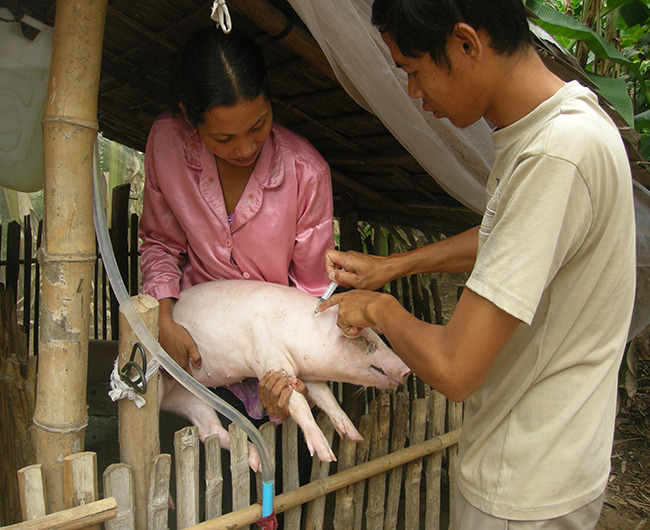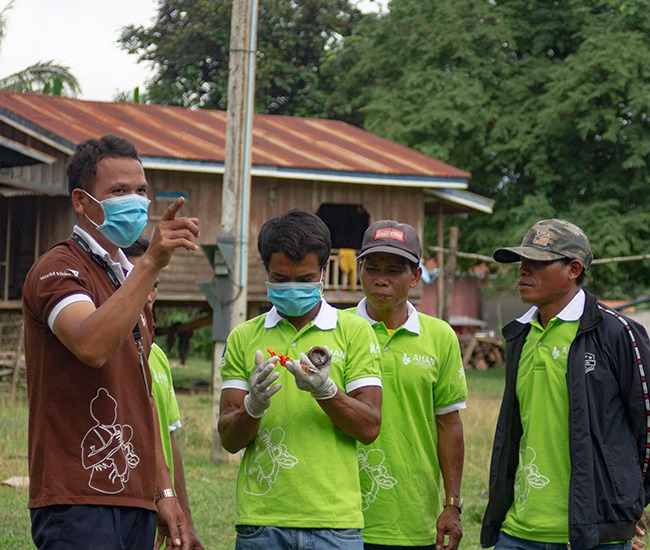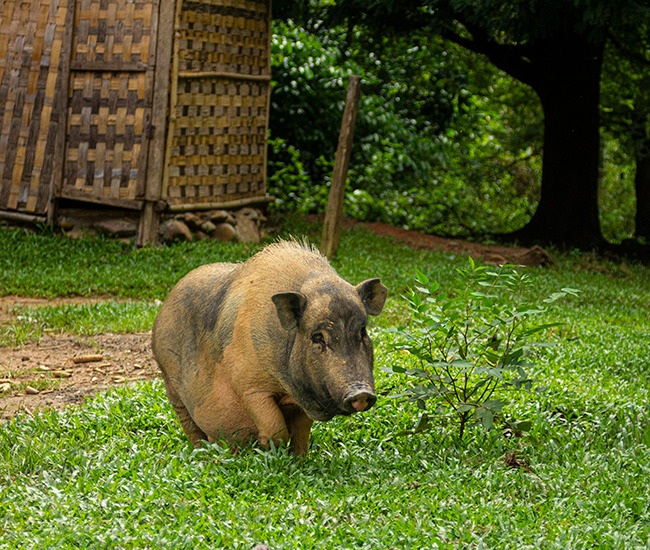In southern Laos, one of society’s biggest challenges is the problem of malnutrition, which affects a large proportion of the population, especially children. According to the WHO, 44% of children under the age of five are stunted, 27% are underweight and 6% suffer from wasting (marasmus). These rates, among the highest in the Western Pacific region, are partly explained by the lack of diversity in the diet. Indeed, certain essential nutrients such as proteins, vitamin A, iron, etc., are seriously deficient in the food bowl.
In terms of agriculture, Lao farmers primarily produce rice, accompanied by small livestock (cattle, goats, pigs, poultry) of a few head per family. Some grow off-season crops (dry season), to diversify production and increase family income, complemented by the collection/hunting/fishing of Non-Timber Forest Products (NTFPs). Population growth and pressure on land (industrial operations, mining, etc.) are further straining natural resources, whose renewal is less and less assured, putting the sustainability of such socio-ecosystems at stake. It is becoming increasingly difficult to find wild resources, both animal and plant, leading to a considerable increase in harvesting time, a task that generally falls to women, without ensuring that the nutritional needs of families are met.
What actions have been taken?
The aim of the project was to improve access to and availability of sufficient, diversified food throughout the year to cover the nutritional needs of the population. The AHAN project intensified agricultural and livestock production for households. Actions included improving post-harvest processing and storage of rice and agricultural products, as well as improving the quality of and access to animal health services in targeted villages. Work on the establishment of market garden crops and rice cultivation has also helped to ensure food diversification, as well as year-round availability.
The project covered 12 districts in the provinces of Savannakhet, Saravane and Attapeu. Of these 12 districts, 124 villages were selected on the basis of malnutrition rates, benefiting over 2,400 families.
In addition to increasing the availability and diversity of food, the development of agriculture and livestock farming reduces the pressure communities exert on their own environment. Indeed, food production moderates dependence on wild resources, ensuring more sustainable ecosystem management. It also means that women, especially mothers of young children, are less likely to have to travel far from their villages to provide care, particularly breast-feeding.
What impact?
Thanks to the project, 248 Community Animal Health Workers have been trained to ensure the sustainability of livestock farming and reduce the livestock mortality rate. The food security of families has also increased by 58%, and the proportion of children under 5 meeting the daily nutritional recommendations has risen from 22% in 2018 to 68% today! In total, 135,900 people have been affected by this project.
The project has also advanced gender equality: survey results show that the proportion of households considering it normal for men to have more power in the family has been divided by 3.








